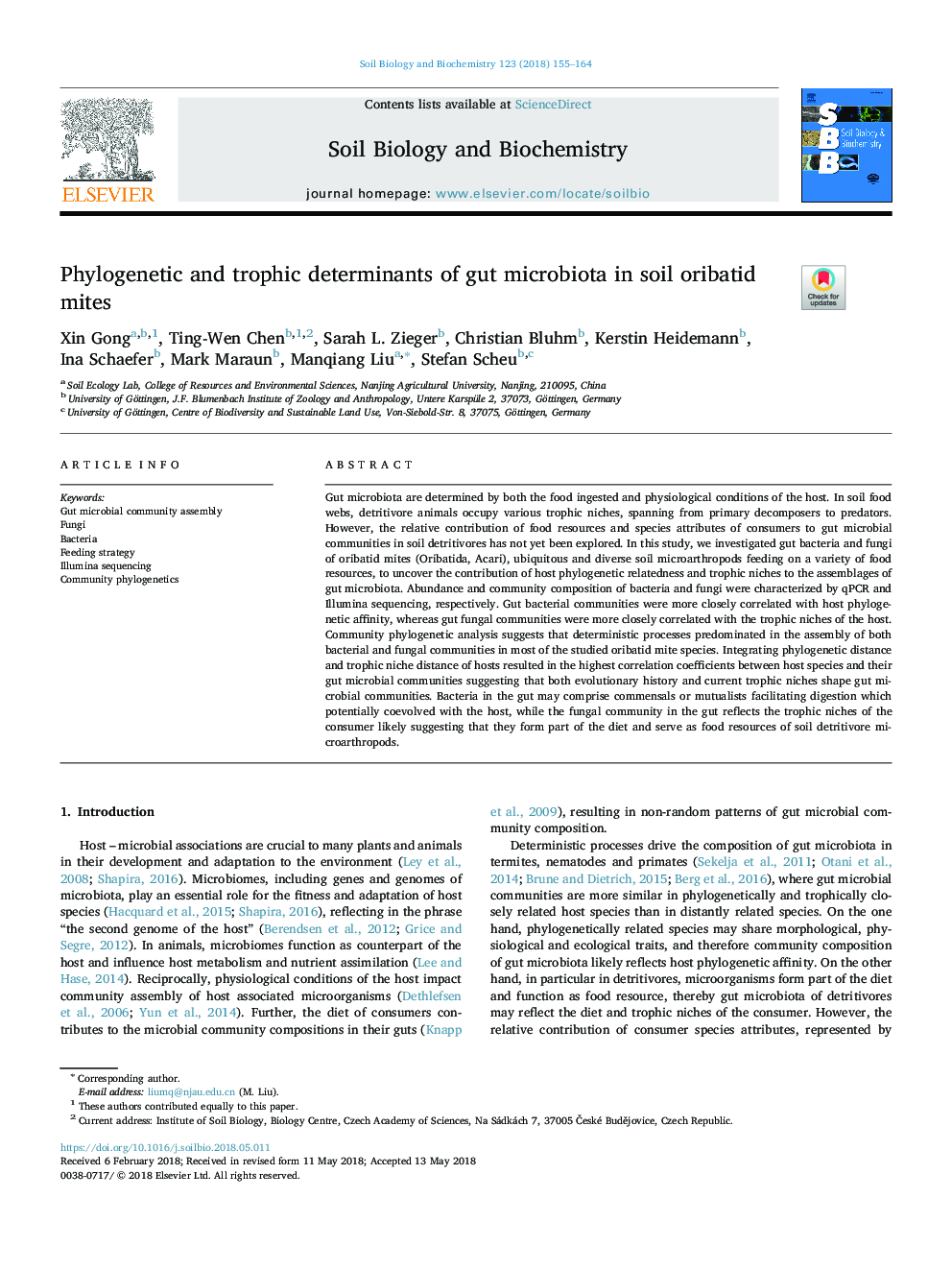| Article ID | Journal | Published Year | Pages | File Type |
|---|---|---|---|---|
| 8362654 | Soil Biology and Biochemistry | 2018 | 10 Pages |
Abstract
Gut microbiota are determined by both the food ingested and physiological conditions of the host. In soil food webs, detritivore animals occupy various trophic niches, spanning from primary decomposers to predators. However, the relative contribution of food resources and species attributes of consumers to gut microbial communities in soil detritivores has not yet been explored. In this study, we investigated gut bacteria and fungi of oribatid mites (Oribatida, Acari), ubiquitous and diverse soil microarthropods feeding on a variety of food resources, to uncover the contribution of host phylogenetic relatedness and trophic niches to the assemblages of gut microbiota. Abundance and community composition of bacteria and fungi were characterized by qPCR and Illumina sequencing, respectively. Gut bacterial communities were more closely correlated with host phylogenetic affinity, whereas gut fungal communities were more closely correlated with the trophic niches of the host. Community phylogenetic analysis suggests that deterministic processes predominated in the assembly of both bacterial and fungal communities in most of the studied oribatid mite species. Integrating phylogenetic distance and trophic niche distance of hosts resulted in the highest correlation coefficients between host species and their gut microbial communities suggesting that both evolutionary history and current trophic niches shape gut microbial communities. Bacteria in the gut may comprise commensals or mutualists facilitating digestion which potentially coevolved with the host, while the fungal community in the gut reflects the trophic niches of the consumer likely suggesting that they form part of the diet and serve as food resources of soil detritivore microarthropods.
Related Topics
Life Sciences
Agricultural and Biological Sciences
Soil Science
Authors
Xin Gong, Ting-Wen Chen, Sarah L. Zieger, Christian Bluhm, Kerstin Heidemann, Ina Schaefer, Mark Maraun, Manqiang Liu, Stefan Scheu,
